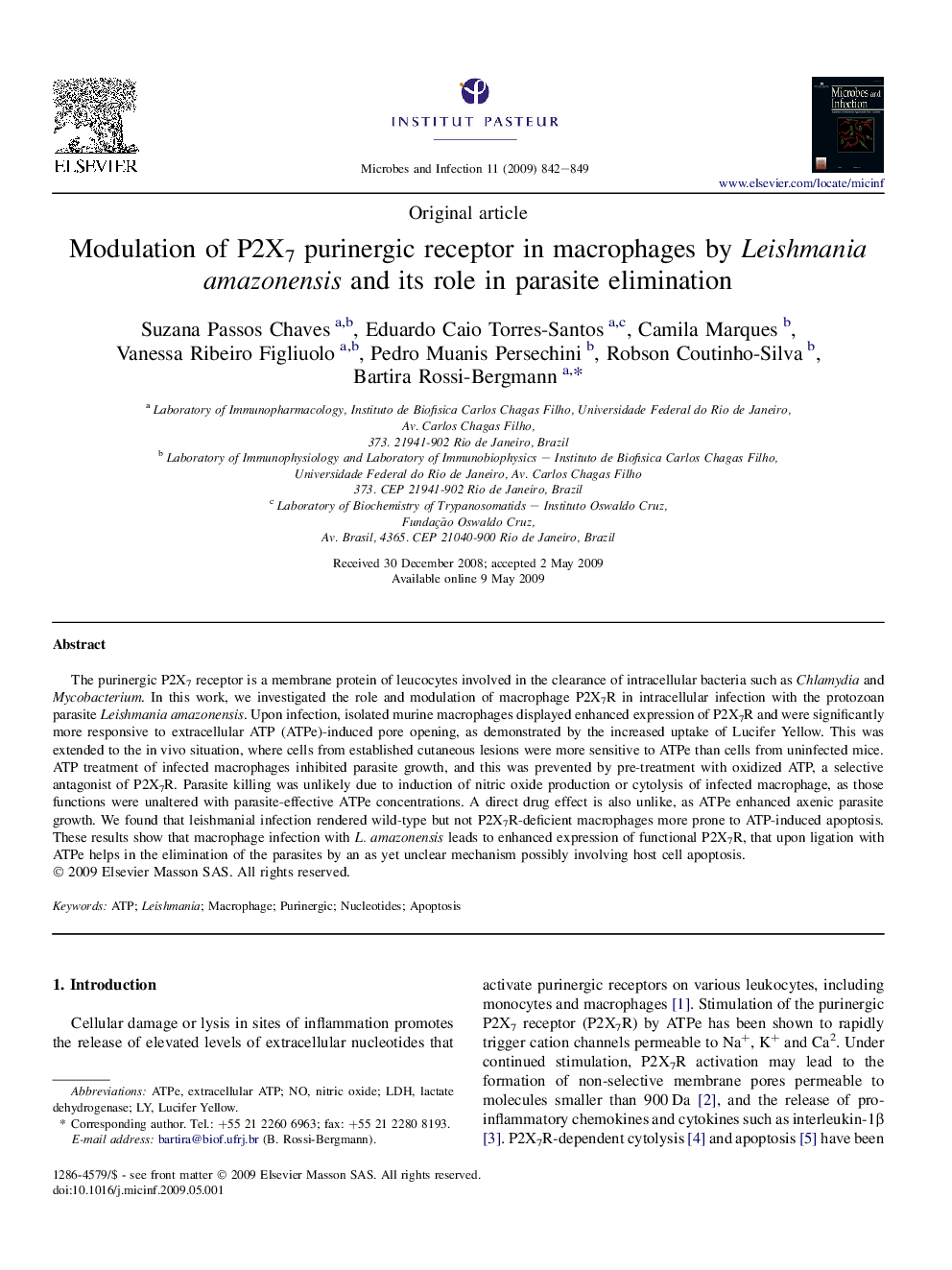| Article ID | Journal | Published Year | Pages | File Type |
|---|---|---|---|---|
| 3415371 | Microbes and Infection | 2009 | 8 Pages |
The purinergic P2X7 receptor is a membrane protein of leucocytes involved in the clearance of intracellular bacteria such as Chlamydia and Mycobacterium. In this work, we investigated the role and modulation of macrophage P2X7R in intracellular infection with the protozoan parasite Leishmania amazonensis. Upon infection, isolated murine macrophages displayed enhanced expression of P2X7R and were significantly more responsive to extracellular ATP (ATPe)-induced pore opening, as demonstrated by the increased uptake of Lucifer Yellow. This was extended to the in vivo situation, where cells from established cutaneous lesions were more sensitive to ATPe than cells from uninfected mice. ATP treatment of infected macrophages inhibited parasite growth, and this was prevented by pre-treatment with oxidized ATP, a selective antagonist of P2X7R. Parasite killing was unlikely due to induction of nitric oxide production or cytolysis of infected macrophage, as those functions were unaltered with parasite-effective ATPe concentrations. A direct drug effect is also unlike, as ATPe enhanced axenic parasite growth. We found that leishmanial infection rendered wild-type but not P2X7R-deficient macrophages more prone to ATP-induced apoptosis. These results show that macrophage infection with L. amazonensis leads to enhanced expression of functional P2X7R, that upon ligation with ATPe helps in the elimination of the parasites by an as yet unclear mechanism possibly involving host cell apoptosis.
